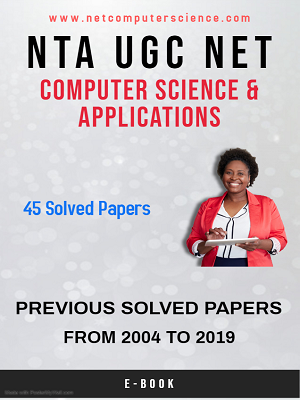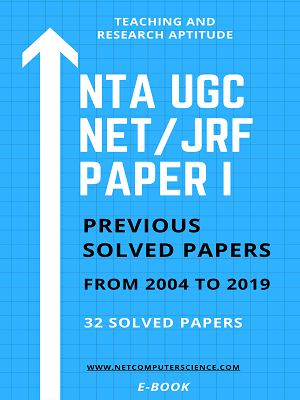Read the
passage carefully and answer questions 11 to 15:
Today,
in the digital age, who owns information owns the future. In this digital
world, we face a fundamental choice between open and closed. In an open world
information is shared by all freely available to everyone. In a closed world
information is exclusively owned and controlled by a few. Today, we live in a
closed world a world of extraordinary and growing concentrations in power and
wealth. A world where innovation is held back and distorted by the dead hand of
monopoly; where essential medicines are affordable only to the rich, where
freedom is threatened by manipulation, exclusion and exploitation; and each
click you make, every step you take, they will be watching you. By contrast, in
an open world all of us would be enriched by the freedom to use, enjoy and
build on everything from statistics and research to newspaper stories and
books, from software and films to music and medical fomulae. In an open world,
we would pay innovators and creators more and more fairly, using market-driven
remuneration rights in place of intellectual property monopoly rights. As they
have improved, digital technologies have taken on ever more of the tasks that
humans used to do, from manufacturing cars to scheduling appointments. And in
the next few decades, artificial intelligence may well be not only driving our
cars for us but drafting legal contracts and performing surgery. On the face of
it, we have much to gain if machines can spare us tedious or routine tasks and
perform them with greater accuracy. The danger, though, is that robots run on
information-software, data algorithms and at present the ownership of this sort
of information is unequal. And because it is protected by our closed system of
intellectual property rights.
11. How
will an open world function?
(1) With
limited choices
(2)
Information is available to everyone
(3)
Information is exclusive
(4)
Information is controlled
Answer: 2
12. Which
of these characteristics of a closed world?
(a) Concentration
in power and wealth increases
(b) Innovation
is controlled
(c) Only the
rich have access to medicines
(d) Freedom
is manipulated
(e) Information
is shared by all
(f) Creativity
is recognised
Code:
(1) (a), (b),
(c) and (d)
(2) (b), (c),
(d) and (e)
(3) (c), (d),
(e) and (f)
(4) (d), (e),
(f) and (a)
Answer: 1
13. What
is the status of intellectual property rights in an open world?
(1) They are
monopoly rights
(2) Medical
formulae are restricted
(3) Replaced
by remuneration rights
(4)
Protected proprietorial rights
Answer: 3
14. What
is impact of digital technologies on the present day world?
(1)
Creativity is sidelined
(2)
Mechanical accuracy is distorted
(3) Tedious
tasks see an upward trend
(4) Human
tasks are performed by machines
Answer: 4
15. The
crux of the passage contains the following statements:
(a) Digital
technology is dangerous
(b) Those
who own information will own the future
(c) Artificial
intelligence will do the human tasks
(d) Monopoly
of digital technology has led to unequal ownership of information
(e) Intellectual
property rights should be protected in an open world
(1) (a), (b)
and (c)
(2) (b), (c)
and (d)
(3) (c), (d)
and (e)
(4) (d), (e)
and (a)
Answer: 2
16. In
verbal communication, words act as:
(1) Fillers
(2) Decoratives
(3) Symbols
(4) Passive
barriers
Answer: 3
17. Modern
educational communication is described as:
(1)
Teleologic
(2) Non-distributive
(3)
Un-approximate
(4)
Telescopic
Answer: 1
18. Effective
classroom communication would help students internalise:
(a) Knowledge
(b) Subject matter
(c) Articulation
(d) Language felicity
(e) Non-responsiveness
(f) Modalities of resistance
Code:
(1) (a), (b),
(c) and (d)
(2) (b), (c),
(d) and (e)
(3) (c), (d),
(e) and (f)
(4) (a), (d),
(e) and (f)
Answer: 1
19. The
challenging behaviours of students as related to communication are:
(a) Purposive
challenges (b) Critical challenges
(c) Procedural
challenges (d) Evaluation challenges
(e) Practicality
challenges (f) Power challenges
Code:
(1) (a), (b),
(c) and (d)
(2) (b), (c),
(d) and (f)
(3) (c), (d),
(e) and (f)
(4) (d), (e),
(f) and (a)
Answer: 3
20. Classroom
communication has a basis in:
(1) Audience
fragmentation
(2)
Non-informative cues
(3)
Attention diversion
(4)
Intensive listener focus
Answer: 4









4 Comments
I love the blog. Great post. It is very true, people must learn how to learn before they can learn. lol i know it sounds funny but its very true. . .
ReplyDeleteTableau online training
I appreciate your efforts because it conveys the message of what you are trying to say. It's a great skill to make even the person who doesn't know about the subject could able to understand the subject . Your blogs are understandable and also elaborately described. I hope to read more and more interesting articles from your blog. All the best.
ReplyDeleteSql server dba online training
Nice post. By reading your blog, i get inspired and this provides some useful information. Thank you for posting this exclusive post for our vision..
ReplyDeleteOracle DBA Online Training
Difficult to read? Write down the URLs of several Web sites that you do not like with a short explanation as to why you don't like them on your "What I Don't Like" worksheet. Natalia
ReplyDelete